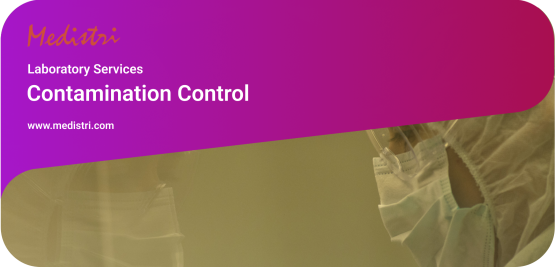(Download: Contamination Control in PDF by Medistri)
Contamination Control is a critical aspect of quality assurance in various industries, particularly those related to healthcare. It encompasses a set of practices aimed at maintaining a clean and sterile environment to prevent the introduction, growth, or spread of contaminants.
Contamination control is a fundamental practice in industries where cleanliness and sterility are fundamental. It involves a series of protocols and measures designed to prevent the introduction and spread of contaminants that could jeopardize product quality, consumer safety, and regulatory compliance. Contamination Control is key to keep the integrity of products and processes, ensuring that they meet the highest standards of safety and efficacy for the end-users.
Environmental monitoring and contamination control are deeply interconnected within the framework of manufacturing practices, especially in industries that require sterile conditions. Environmental monitoring acts as a systematic surveillance method, consistently evaluating the cleanliness of the air, surfaces, and equipment. This continuous scrutiny is vital for detecting any deviation from the established cleanliness standards.
The data gathered from environmental monitoring informs the contamination control strategy, enabling it to be dynamic and responsive. If the monitoring detects a rise in particulate or microbial levels, the contamination control measures can be adjusted accordingly to address these changes. This could involve enhancing cleaning protocols, revising personnel flows, or updating equipment sterilization processes.
👉 Environmental Monitoring refers to the tools and techniques designed to observe an environment, characterize its quality, and establish environmental parameters, for the purpose of accurately quantifying the impact an activity has on an environment. Results are gathered, analyzed statistically, and then published in a risk assessment and environmental monitoring and impact assessment report.
Good Manufacturing Practice guidelines, particularly Annex 1, provide regulations for the manufacture of sterile medicinal products, emphasizing the importance of a contamination control strategy.
GMP Annex 1 is a regulatory guideline for the manufacture of sterile medicinal products. It provides comprehensive instructions to ensure that these products are free from microbial, particulate, and pyrogen contamination. The guideline covers various aspects of production, including the design and operation of facilities and equipment, personnel training, quality control, and environmental monitoring. The aim is to maintain the highest standards of product quality and safety for patient protection.
GMP Annex 1 is implemented through a series of well-defined practices and procedures that are designed to ensure the sterile production of pharmaceutical products.
🎯 To learn more about Medistri’s Contamination Control, visit on our website here or directly contact our team at contact@medistri.swiss.
- The Medistri Team
#Medistri
